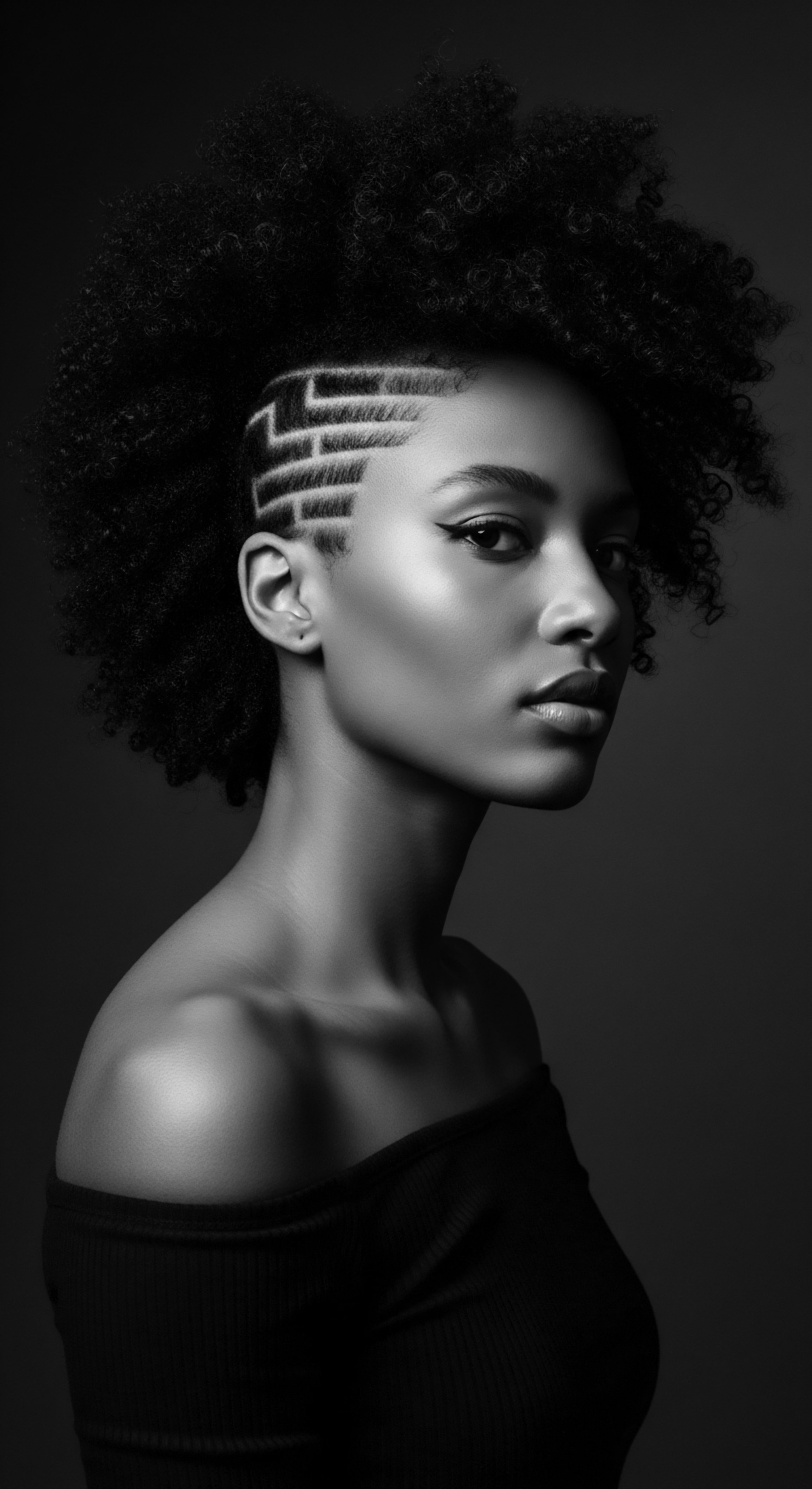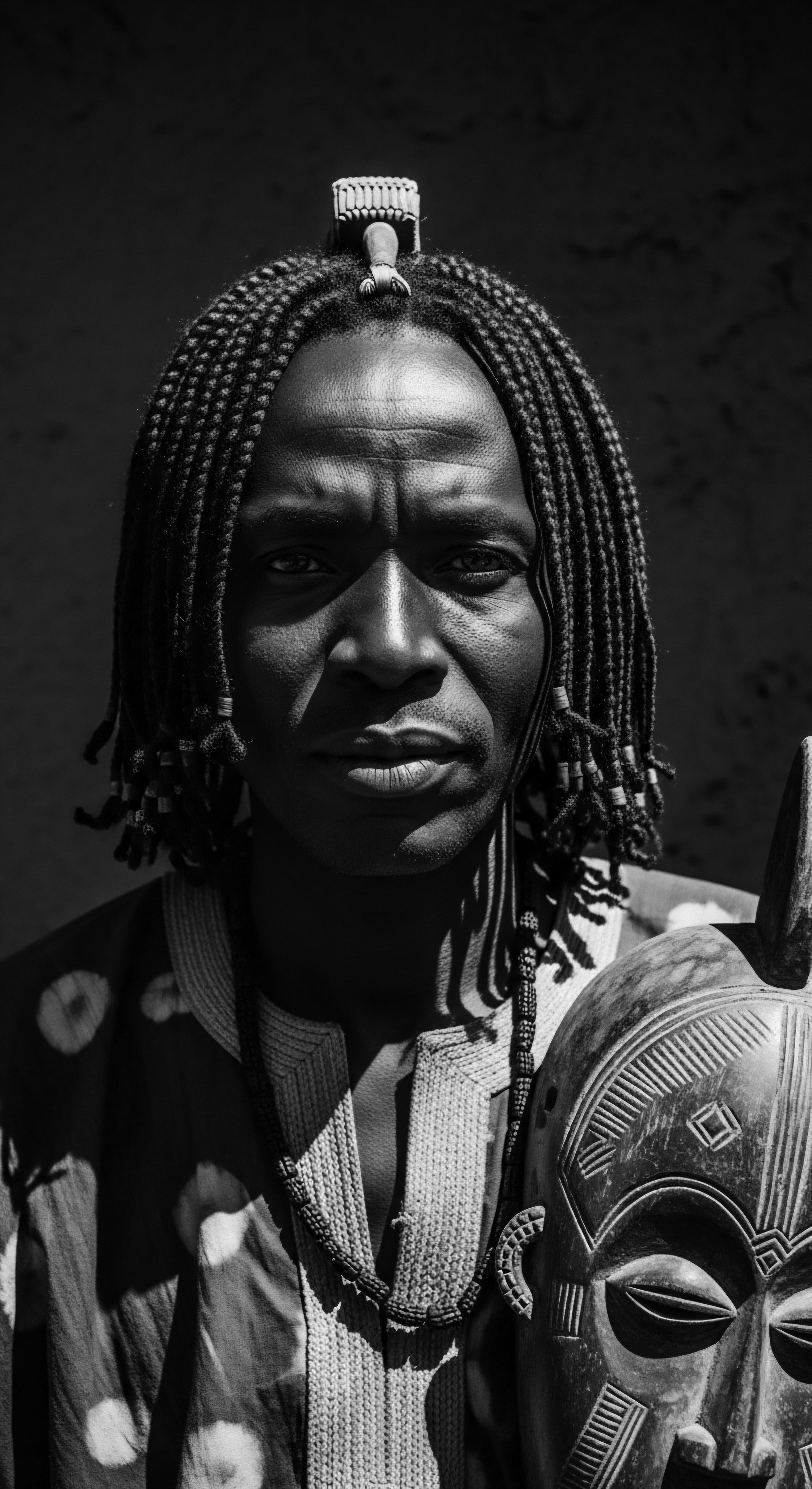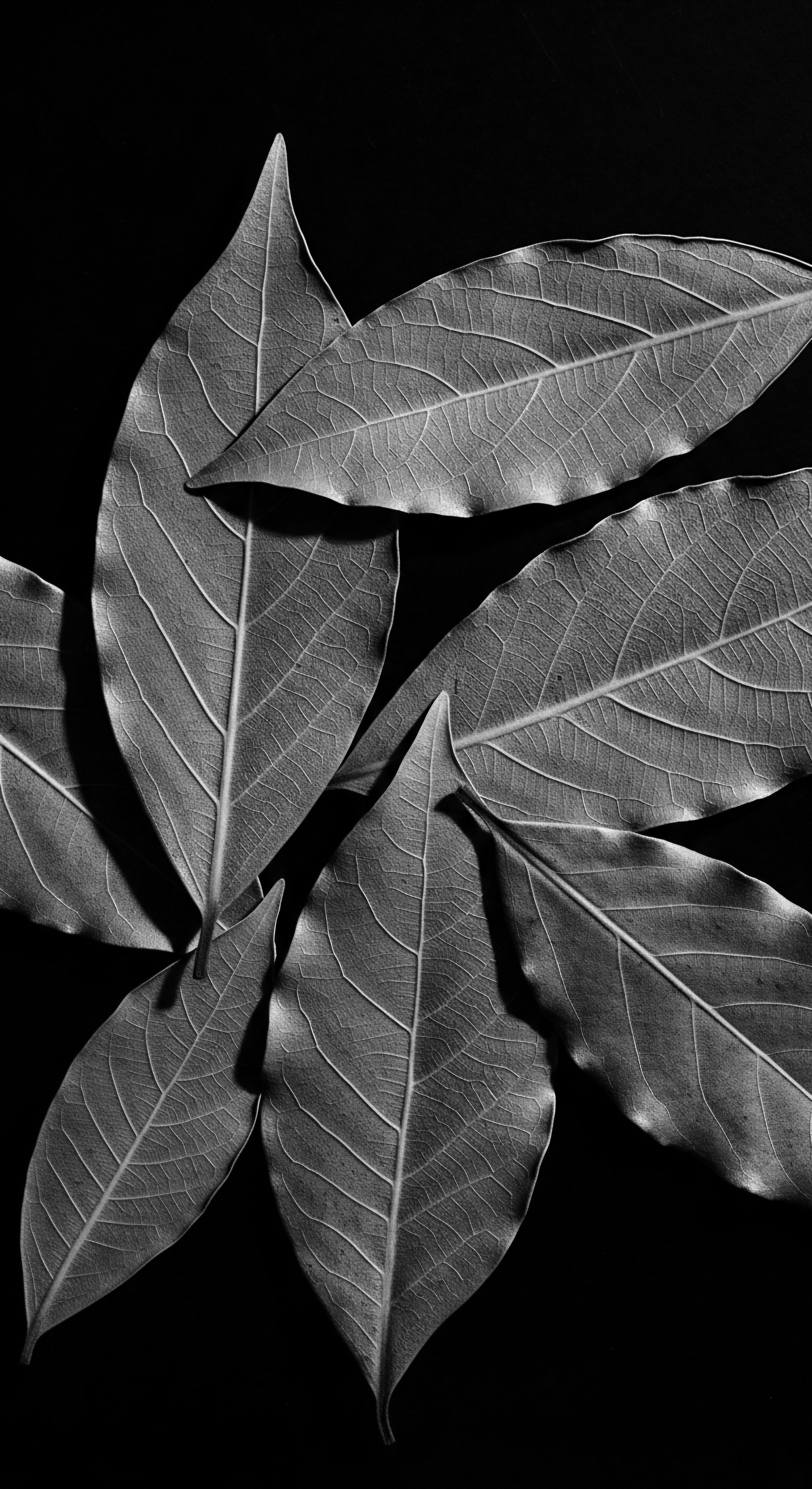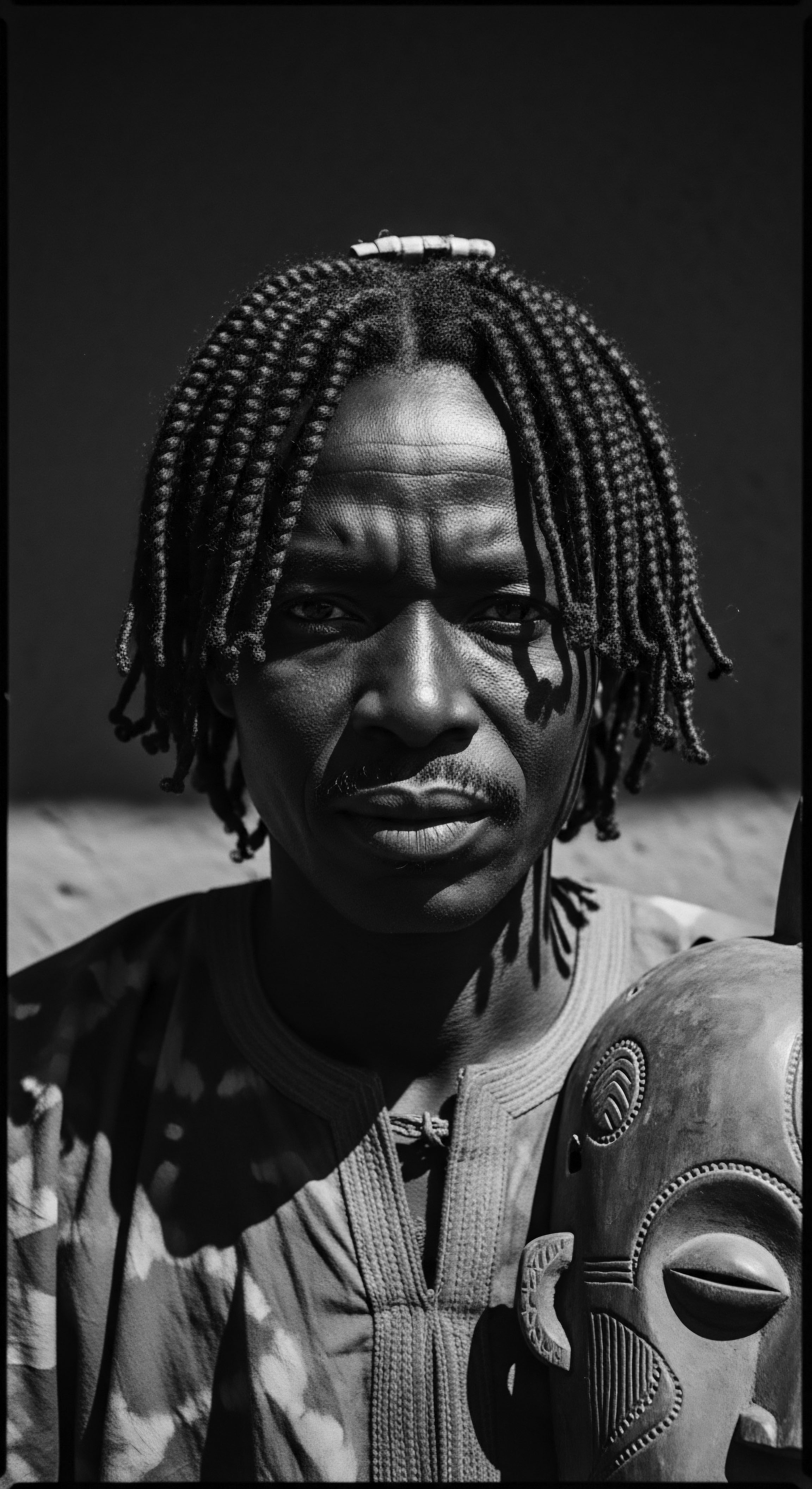
Fundamentals
The very fabric of our being, a profound connection to ancestral pathways, lies within the strands crowning our heads. Within this vast landscape of human hair, the concept of Mixed Hair Biology emerges not as a simple categorization, but as a living narrative, a profound testament to the intricate dance of inherited traits. At its elemental sense, it refers to hair that manifests a confluence of distinct textural patterns along a single strand or across the entire scalp, often stemming from diverse genetic inheritances. This biological reality finds its most resonant expression within Black and mixed-race communities, where the rich tapestry of human migration and cross-cultural lineage has sculpted a breathtaking spectrum of hair phenotypes.
Understanding this biology begins with appreciating the fundamental components that dictate hair’s character ❉ the follicle, the hair shaft itself, and the intricate architecture of the cuticle. Each of these elements, shaped by genetic coding, influences the curl pattern, density, porosity, and strength of the hair. For individuals with mixed hair, these genetic directives often present in a unique symphony, leading to areas of tighter coils alongside looser waves, or strands that defy singular classification. This biological particularity necessitates a nuanced approach to care, one that acknowledges and celebrates the unique demands of each textural expression.
Mixed Hair Biology represents a unique genetic orchestration of hair textures, manifesting as diverse curl patterns and characteristics across an individual’s scalp or within single strands.
The earliest whispered wisdom, passed through generations, already recognized the variations within hair, even if the lexicon lacked scientific terms. Ancient peoples, observing the nuances of hair within their communities, developed highly specialized methods of care, utilizing natural resources to address hair’s specific needs. These practices, steeped in observation and communal knowledge, formed the bedrock of hair traditions, instinctively responding to what we now scientifically name as Mixed Hair Biology. The understanding was practical, inherited, and intimately tied to survival and communal well-being, long before microscopes revealed the cellular intricacies.
- Follicle Shape ❉ The shape of the hair follicle, whether round, oval, or elliptical, fundamentally influences the hair’s curl pattern. A flatter, more elliptical follicle creates tighter curls, while a rounder follicle generates straighter hair.
- Hair Shaft Structure ❉ The internal composition and distribution of keratin within the hair shaft dictate its strength and elasticity, a key consideration for the varied textures in mixed hair.
- Cuticle Layer ❉ The outermost protective layer, or cuticle, comprises overlapping scales. Its integrity and how tightly these scales lie determine hair’s porosity, its ability to absorb and retain moisture—a vital aspect for hair presenting multiple textures.
Consider the daily rituals practiced across many African societies, where particular oils and butters, such as Shea Butter or Black Seed Oil, were prepared and applied. These substances, chosen for their emollient properties and ability to seal moisture, served to protect diverse hair textures from environmental challenges, speaking to an intuitive understanding of hair’s needs that predates modern molecular biology. The preparation of these ingredients, often a communal endeavor, underscored the social dimensions of hair care, a practice extending beyond mere aesthetics into realms of well-being and community identity. This historical lens reveals that the recognition of varied hair needs, foundational to Mixed Hair Biology, is not a recent discovery, but an ancient wisdom resurfacing in contemporary dialogues.

Intermediate
Moving beyond the foundational understanding, the intermediate exploration of Mixed Hair Biology requires a deeper appreciation of the forces that shaped its meaning, particularly within the annals of textured hair heritage. This biological reality represents a dynamic interplay of genetic predispositions, environmental adaptations, and cultural shaping, each contributing to the unique hair profiles seen across diverse populations. The meaning of Mixed Hair Biology expands here to encompass the historical continuum of care, innovation, and self-acceptance that defines the journey of Black and mixed-race individuals. It reflects not merely a scientific classification but a living legacy, a testament to resilience and adaptation.
The genetic blueprints governing hair structure are inherited from ancestral lines, often blending traits from multiple ethnic origins. This genetic mosaic can result in a single individual possessing a range of curl patterns from very tight coils (Type 4) to loose waves (Type 2) or curls (Type 3), presenting a dynamic challenge and opportunity for tailored care. The distinct needs of each texture, in terms of moisture, manipulation, and protection, necessitate an informed approach, honoring the hair’s natural inclinations. This understanding forms the bedrock for developing specialized care regimens that acknowledge the hair’s dual or multiple natures.
Throughout history, the practices surrounding mixed hair have been intricately linked to social context and self-perception. In the context of colonial encounters, for instance, hair texture often became a marker of social standing, a visual shorthand for degrees of perceived “purity” or “proximity” to European ideals. This historical pressure, though often insidious, paradoxically spurred communities to develop ingenious and deeply rooted hair care traditions, creating intricate styles that celebrated varied textures or devising protective methods that preserved hair health amidst adversity. The knowledge of how to tend to diverse textures became a form of inherited wealth, passed through generations, safeguarding both physical hair health and cultural identity.
Intermediate insight into Mixed Hair Biology unveils its multifaceted nature, a blend of genetic inheritance, environmental adaptation, and culturally shaped care traditions that have defined hair experiences across history.
| Region West Africa (e.g. Ghana) |
| Historical Practices/Ingredients Uses of shea butter, black soap, and specific herbal infusions (e.g. Chebe powder from Chad). Braiding and twisting common. |
| Relevance to Mixed Hair Biology Emphasized moisture retention for coily textures and strength for delicate strands, directly addressing varied porosities and curl patterns typical in mixed hair. |
| Region Caribbean (e.g. Haiti) |
| Historical Practices/Ingredients Coconut oil, castor oil, aloe vera. Hair pressing techniques and elaborate protective styling. |
| Relevance to Mixed Hair Biology Aimed to smooth and protect tighter coils while adding sheen to looser textures, adapting practices to humid climates and diverse hair forms resulting from mixed heritage. |
| Region North America (Pre-Emancipation) |
| Historical Practices/Ingredients Animal fats, cornmeal-based cleansers, herbal rinses. Development of complex head wraps and cornrowing. |
| Relevance to Mixed Hair Biology Addressed the wide spectrum of hair textures common among enslaved and free Black communities, prioritizing cleanliness, protection from labor, and cultural expression through intricate styles. |
| Region These traditional methods showcase an ancestral intuition regarding the needs of diverse hair textures, a wisdom often corroborated by contemporary scientific understanding. |
The societal narratives surrounding textured hair have undeniably influenced the evolution of care. From the mid-20th century, the rise of the Black Power movement in the United States, for instance, saw a powerful reclamation of natural hair as a symbol of pride and resistance. This cultural shift encouraged individuals to embrace their diverse textures, including those reflecting mixed heritage, moving away from chemical alterations that sought to homogenize hair.
This period marked a profound expansion of the meaning of Mixed Hair Biology, recognizing it as a source of strength and beauty, a tangible connection to ancestral narratives and a celebration of individual authenticity. The conversations surrounding product development and hair care research began to shift, slowly, towards catering to the unique requirements of this diverse hair spectrum, echoing the ancestral practices of bespoke care.

Academic
The academic investigation of Mixed Hair Biology transcends mere description; it constitutes a rigorous inquiry into the complex interplay of genetics, biophysics, historical anthropology, and socio-cultural construction, all converging to define hair that defies monolithic classification. At its most precise, Mixed Hair Biology delineates the structural and chemical characteristics of hair strands or entire hair masses that express a statistically significant variability in parameters such as diameter, cross-sectional shape (ellipticity), curvature, elasticity, and cuticle integrity, attributed to polygenic inheritance patterns often arising from diverse ancestral populations. This nuanced biological reality extends beyond a simple “mix” of two distinct types; it frequently represents a continuum of traits, where the precise phenotypic expression results from the quantitative influence of numerous genes contributing to follicular morphology and keratinization processes.
For scholars of human diversity, the meaning of Mixed Hair Biology is inextricably linked to the historical dynamics of human populations, particularly those shaped by forced migration, colonization, and subsequent creolization. The genetic legacy of these historical processes is physically manifested in hair, which in many Afro-diasporic contexts, embodies a spectrum of textures derived from African, European, and Indigenous ancestries. The challenge within academic discourse lies in moving beyond essentialist classifications towards a more dynamic and statistical appreciation of hair phenotype, acknowledging that biological variability is the norm, especially within populations with rich, intercontinental genetic histories. The elucidation of this biology provides a scientific foundation for understanding the particular demands of hair care that have been intuitively developed and transmitted through generations in these communities.
A powerful instance of this deep connection between Mixed Hair Biology and its historical context lies in the legislative and social fabric of the 19th-century American South, where hair texture was often codified, directly or indirectly, as a determinant of racial classification and, consequently, legal status. In states like Louisiana, the “Code Noir” and subsequent legislative acts often attempted to define racial categories, and while skin color was a primary marker, the perceived straightness or curliness of hair played a significant, if informal, role in the social and legal negotiations of “passing” or being classified as “mulatto” versus “Negro.” This was not merely an aesthetic observation; it had profound material consequences, determining access to freedom, property, and social mobility. For instance, studies by scholars like Kimberly Wallace-Sanders highlight how visual markers, including hair, informed the discriminatory practices of the period (Wallace-Sanders, 2008).
The very concept of “good hair” or “bad hair,” deeply damaging but historically prevalent within Black communities, is a direct, enduring psychological scar of this historical classification system, compelling individuals to chemically alter hair to conform to a European standard, thereby attempting to mitigate the biological reality of mixed textures. The historical understanding of this phenomenon demonstrates how the inherent biological variability of mixed hair was weaponized, shaping lived experiences and underscoring the vital need for a celebratory and knowledgeable approach to its care today.
The academic interpretation of Mixed Hair Biology delves into its genetic, biophysical, and socio-historical underpinnings, revealing hair as a profound marker of human diversity and historical population dynamics.
Further inquiry reveals that the unique architectural arrangements within mixed hair types—where, for example, a single scalp may bear follicles producing both highly elliptical, tightly coiled strands and less elliptical, wavier strands—impacts fundamental biophysical properties. The tensile strength, elasticity, and susceptibility to breakage often differ significantly across these varied textures. From a materials science perspective, this poses a distinct challenge for product formulation and care methodologies, necessitating ingredients and application techniques that can simultaneously address disparate needs—for instance, the greater need for moisture retention in high-porosity coils balanced with the potential for product buildup on lower-porosity waves. Research into the specific protein arrangements (keratin macrofibrils) and disulfide bonding within varying curl patterns contributes to a more granular understanding of why specific hair textures behave as they do, offering scientific validation for long-standing ancestral care practices.
Moreover, anthropological and sociological studies often examine how the distinct care practices for Mixed Hair Biology have evolved within diasporic communities, functioning as mechanisms of cultural preservation and identity affirmation. These practices are not static; they are living traditions, adapting to new environments and technologies while retaining core principles passed down through oral histories and communal learning. The communal act of “doing hair,” particularly within Black households, frequently becomes a site for transmitting knowledge about how to manage a variety of textures, from detangling tightly coiled areas to styling looser waves, fostering intergenerational bonds and reinforcing a collective understanding of self.
The very act of navigating the varied textures on a single head represents a daily, tactile engagement with a complex, inherited identity. This engagement solidifies the academic recognition of Mixed Hair Biology, not solely as a biological phenomenon, but as a culturally significant entity demanding specific, informed inquiry.
- Genetic Polymorphisms ❉ Academic studies point to specific genetic polymorphisms (variations in DNA sequences) in genes such as EDAR, FGFR2, and TCHH, which are statistically correlated with variations in hair shaft diameter, cross-sectional shape, and curl pattern, directly influencing the expression of mixed hair types.
- Scalp Biome Interactions ❉ Emerging research explores the nuanced relationship between different hair textures and the scalp microbiome. Variations in sebum production and distribution, influenced by follicle type, can lead to differing microbial environments, necessitating tailored cleansing and conditioning regimens for varied textures.
- Historical Cosmetology ❉ The development of early hair care formulations for diverse textured hair, often originating in African diasporic communities, showcased an intuitive understanding of Mixed Hair Biology. Ingredients like rich emollients and humectants were employed to address moisture retention and manageability, long before their chemical properties were understood through modern analytical techniques.
The discourse surrounding Mixed Hair Biology extends into the realms of decolonizing beauty standards and promoting hair liberation. Academically, this involves dissecting how historical biases against textured hair, particularly those that are not uniformly coily or straight, have perpetuated self-perception challenges and informed the market for hair care products. By rigorously defining and examining the biological and socio-cultural dimensions of mixed hair, scholars and practitioners collectively contribute to a more inclusive understanding of beauty, validating the rich spectrum of human hair, and providing a foundation for practices that truly celebrate and support its diverse expression. The ultimate goal is to foster an environment where the meaning of Mixed Hair Biology is one of celebration, rooted in its unique heritage and cared for with informed reverence.

Reflection on the Heritage of Mixed Hair Biology
As we close this thoughtful exploration, we are reminded that Mixed Hair Biology is more than a scientific delineation; it stands as a living archive of human migration, resilience, and profound ancestral knowledge. It is a tangible echo from the source, a whispered story carried in each curl, wave, and coil, connecting us to the tender threads of generations past. The distinct care practices, the communal rituals, and the very embrace of diverse textures within Black and mixed-race communities speak volumes about a heritage rich in adaptation and self-affirmation. This understanding is not merely about identifying a blend of textures, but about acknowledging the enduring spirit that has shaped and preserved these unique hair traditions through periods of both challenge and triumph.
The journey of Mixed Hair Biology, from elemental biological fact to its role in voicing identity, underscores an unbound helix, a continuous intertwining of past and present. It beckons us to look beyond simplistic categorizations and to recognize the profound wisdom embedded in ancestral practices—practices that instinctively understood the disparate needs of varied textures, often with nothing more than discerning hands, natural ingredients, and a deep, intuitive connection to the earth’s bounty. This legacy calls upon us to honor the innate complexity of our hair, treating each strand with a reverence born of historical understanding and a conscious choice to align our care with the wisdom of those who came before us.
In every bespoke conditioner, every careful detangling session, and every conscious styling choice, we are not simply tending to hair; we are engaging in an act of profound cultural remembrance. We are participating in a continuous dialogue with our heritage, affirming the beauty and strength that resides within the diversity of our hair. The future of Mixed Hair Biology care lies not in homogenizing textures but in deeply understanding and celebrating their unique requirements, ensuring that every individual finds empowerment in the distinct narrative their hair tells. It is a path of conscious care, rooted in respect, illuminated by knowledge, and always, always connected to the enduring spirit of ancestry.

References
- Byrd, Ayana D. and Lori L. Tharps. Hair Story ❉ Untangling the Roots of Black Hair in America. St. Martin’s Press, 2001.
- Dyer, Richard. White. Routledge, 1997.
- Hunter, Tera W. To ‘Joy My Freedom ❉ Southern Black Women’s Lives and Labors After the Civil War. Harvard University Press, 1997.
- Patton, Tracey Owens. African American Hair ❉ An Exploration of Historical Identity, Beauty, and Culture. Lexington Books, 2013.
- Rooks, Noliwe M. Hair Raising ❉ Beauty, Culture, and African American Women. Rutgers University Press, 1996.
- Wallace-Sanders, Kimberly. Mammy ❉ A Century of Race, Gender, and Southern Memory. University of North Carolina Press, 2008.
- West, Elizabeth. African American Women and Hair ❉ A Culture of Beauty and Resistance. Taylor & Francis, 2014.
